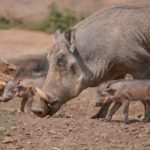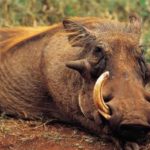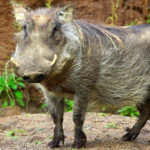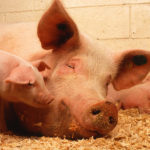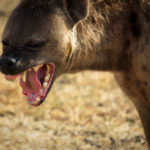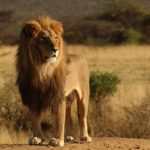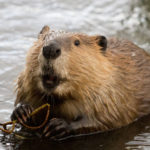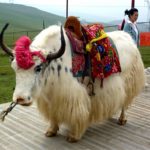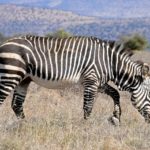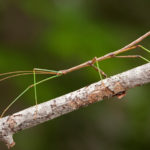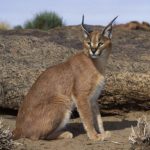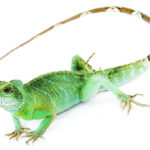Warthogs
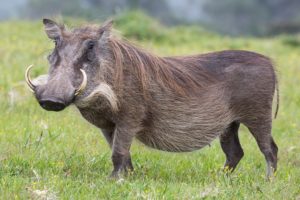 The weight of an warthog varies from 50 to 150 kg, females are 15-20% lighter than males. The length of the trunk, including the head, is 90-150 cm. The height at the withers varies from 63.5 to 85 cm. Both sexes of the warthog have large upper canines, the length of which is: in males 25.5-63.5 cm; in females 15.2-25.5 cm.
The weight of an warthog varies from 50 to 150 kg, females are 15-20% lighter than males. The length of the trunk, including the head, is 90-150 cm. The height at the withers varies from 63.5 to 85 cm. Both sexes of the warthog have large upper canines, the length of which is: in males 25.5-63.5 cm; in females 15.2-25.5 cm.
As their name suggests, warthogs have three pairs of warts on the muzzle, consisting of connective tissue (cartilaginous). The head is large with a mane growing down along the spine to the middle of the back. The body is covered with rare bristles. The color is usually black or brown. The tail is long and ends with a bunch of hair. A small amount of subcutaneous fat and a rare coat, makes warthogs susceptible to extreme temperatures of the environment.
The area of the African warthog is outside the forest areas of Africa, from Mauritania to Ethiopia and south to Namibia and eastern South Africa.
Warthogs inhabit open and wooded savannah areas, grassy steppes, and semi-deserts in Africa south of the Sahara. Warthogs prefer open spaces and avoid tropical forests and deserts. They live on Kilimanjaro up to an altitude of 3000 meters above sea level and along the coastal regions of Africa.
The warthog, also occupies formerly wooded areas that have been cleared under pasture. Warthog distribution is limited due to human intervention. Warthogs need cool corners to cope with high temperatures during the day, and shelters to keep warm during the night cold.
The African warthog is a herbivore, but can also eat roots, berries, bark of young trees, in rare cases even carrion. They prefer to graze on low grasses. Warthogs use their muzzles and tusks to harvest rhizomes and bulbs of plants. The rhizomes of the bulb of plants serve as a source of moisture in the dry season. An African warthog, also eats a rhino litter, an African buffalo, a water goat and a turtle.
